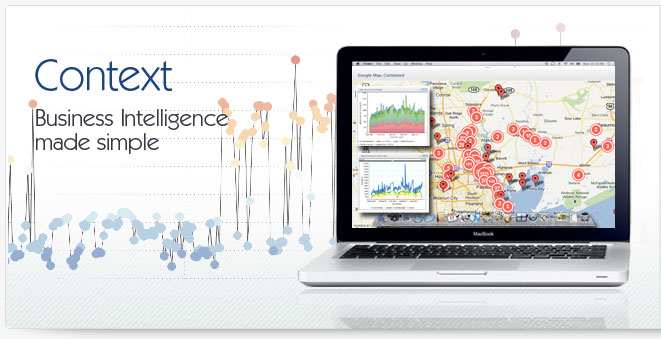Business Intelligence Data Warehousing
Business Intelligence Data Warehousing is the process of using a data
repository to enable the analysis and reporting of
business data. Through
business intelligence data warehousing organizations
can gain significant insight into their operations, gaining a competitive
edge by understanding the key drivers that make their business operate
more efficiently. Through
a properly deployed business intelligence data warehousing
program you could for example gain a better understanding of what customers
are key buyers of your products or services, or you
could get a better view of the biggest costs that are impacting your
organization. If
your business intelligence data warehousing project
also has a predictive analytics component, you will also be able to
build predictive profiles of your data to help you reduce key business
drivers like Average Days Sales Outstanding (DSO).
How Business Intelligence Data Warehousing Works
The core concept behind business intelligence data warehousing is
simple. The idea is to create a repository of key data for the
organization that is then available for company wide use for the sole
purpose of creating reports, key performance indicators and predictive
analysis. The idea behind a dedicated business intelligence data
warehousing repository is borne out of two critical needs: First is
the need by IT to minimize the amount of reads and writes that happen
to production data bases like ERP and Accounting systems. The
second is the need to only provide access to key data that is useful
for reporting and analysis, rather than providing access to the vast
amounts of fields and tables that most enterprise systems have available. Through
business intelligence data warehousing both the needs of IT and the
needs of business managers are satisfied.
Getting Ready for Business Intelligence Data Warehousing
Before your company embarks on a business intelligence data warehousing
project there are a couple of key steps that need to take place. The
first is to gather information from all relevant departments on the
set of business questions they want to address through the business
intelligence data warehousing project. These questions might
be things like "understanding the company's average days sales
outstanding" or "getting insight into who our best customers
are and what they buy." Once each department has agreed
on their requirements, the next step is to identify in which systems,
tables and fields the data they need resides. Armed with this
information you will now be able to build your business intelligence
data warehousing application.
Data Integration, the Heart of Business Intelligence Data Warehousing
Once you have all the relevant information it's time to create your
business intelligence data warehousing project. The core piece
of technology that you will need to complete your
project is a data integration application that will allow you to map
the various fields from all your in-house systems to your business
intelligence data warehousing project. Through data integration
you will be able to create a central repository of key data that your
business intelligence applications can now access. The combination
of this data repository and the business intelligence applications
is the business intelligence data warehousing project.
Business Intelligence Data Warehousing for Small Business
As a small or mid-sized business the key question is whether business
intelligence data warehousing is right for you. With new tools
available like free, open-source databases, affordable data integration
platforms like EMANIO Unite! and low-cost business intelligence software
like Insight!, business intelligence data warehousing is definitively
within the reach of the smaller business. With careful planning
any organization can gain the benefits of business intelligence data
warehousing with even modest budgets.
|



